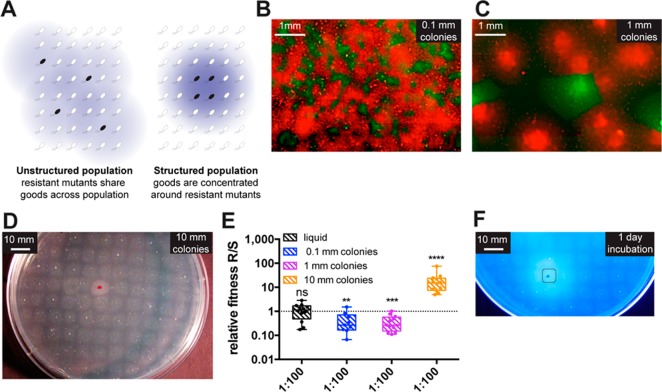Figure 5.
Structured environments retain susceptibility to cheating. (A) Schematic showing that a well-mixed culture would quickly distribute goods away from the producers and also prevent producers from making monoclonal patches of high goods concentrations. (B–D) Images demonstrating the increasing degrees of population structure that were tested. In panels B and C, fluorescence microscopy was used to visualize 1:10 ratios of R producing GFP (green) and S producing mCherry (red). In panel D, a 1:100 ratio of R vs S was visualized without magnification: the macrocolony marked with a red dot is R, and the 99 other spots on the plate are S. (E) Relative fitness of signal-independent R vs S in liquid group-beneficial medium and in solid group-beneficial medium with different degrees of population structure. Data analysis was analogous to that described in Figure 4. (F) Image visualizing the diffusion of protease-digested goods after 1 day of growth of a 1:100 ratio of R vs S. The bright halo around the single R colony (circled) is diffused protease-digested fluorogenic substrate. The substrate diffusion indicates the distance over which QSI-sensitive bacteria can cheat off neighboring QSI-resistant bacteria.

